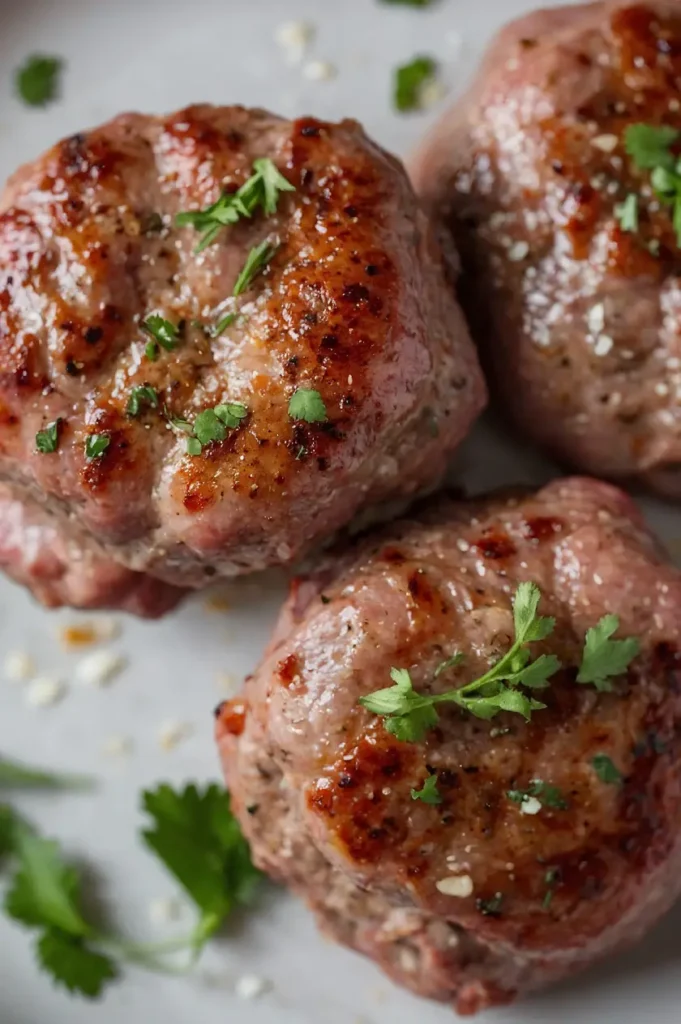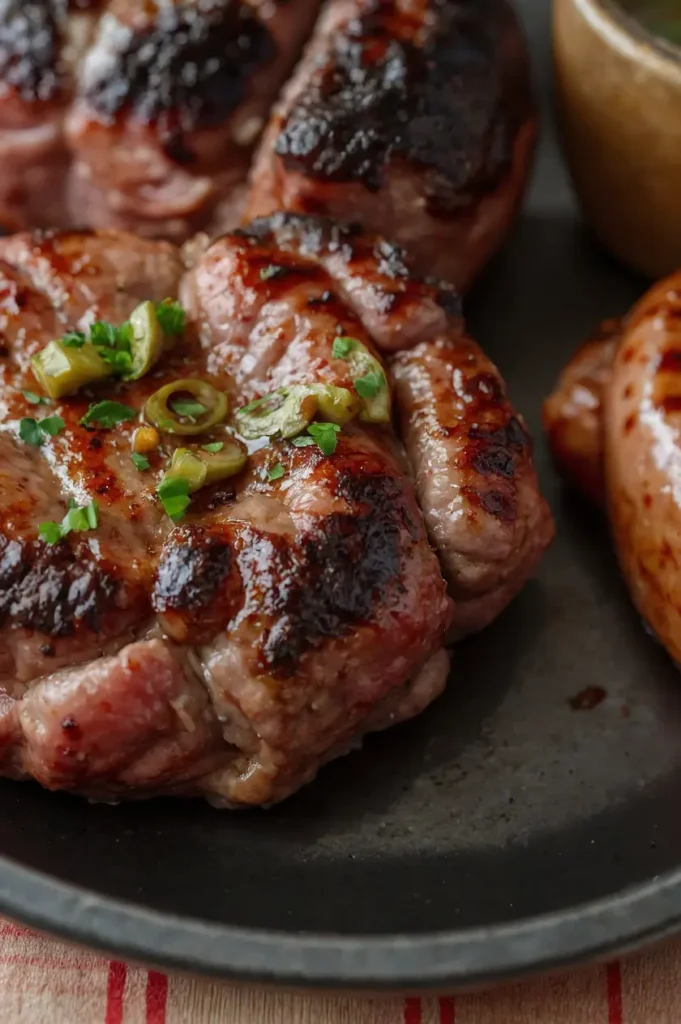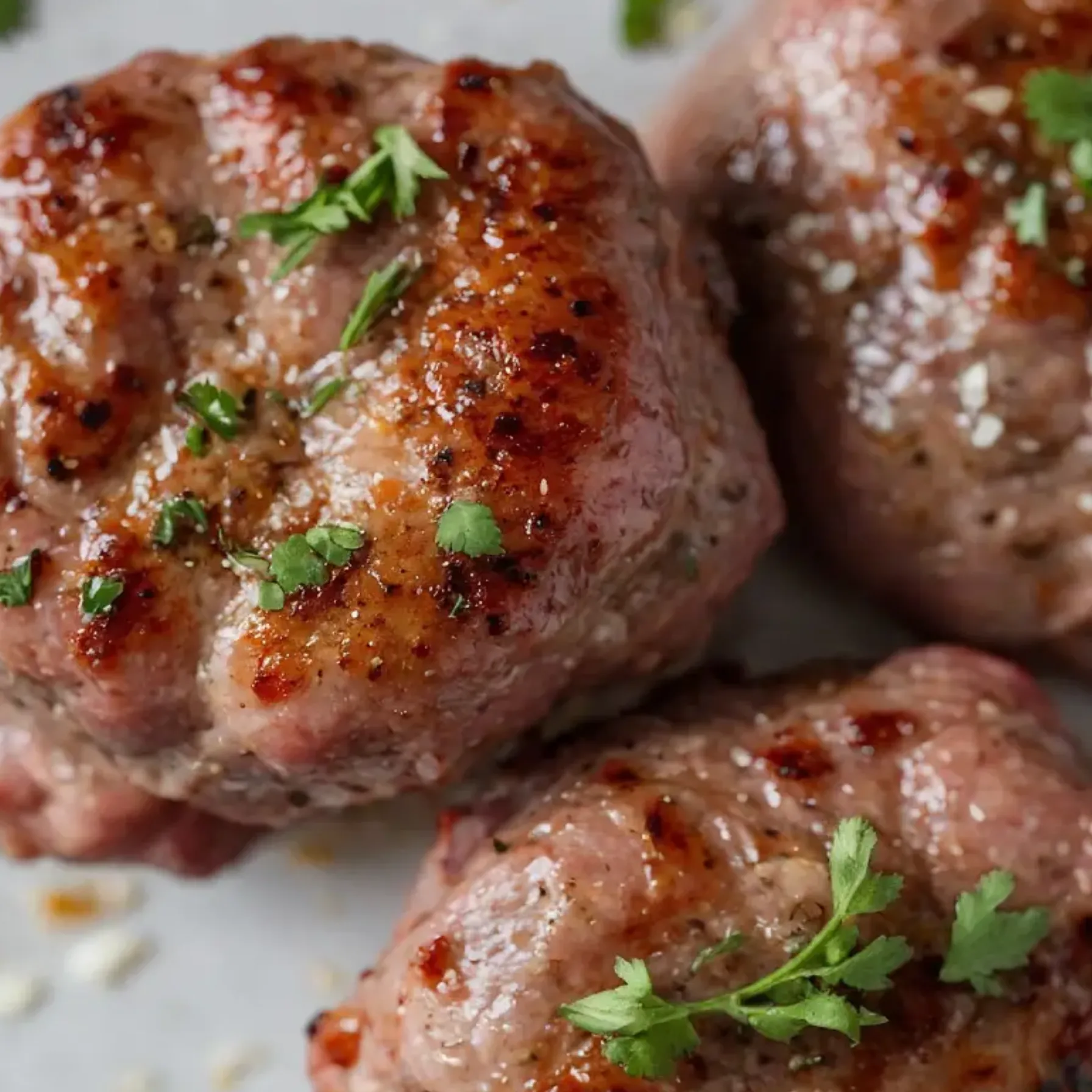Beef Sausage Meat Recipe: How to Make Your Own at Home
Learn how to make your own beef sausage meat recipe at home with fresh ingredients, rich flavors, and no additives. Easy, delicious, and fully customizable
Introduction: The Joy of Homemade Beef Sausage
Picture this: You’re standing in your kitchen, the smell of sizzling beef sausage meat recipe filling the air, your mouth watering in anticipation. With each bite, you know you’re tasting something fresh, flavorful, and free of any additives or preservatives. This is the magic of making your beef sausage meat at home.
If you’ve ever wondered how to create the perfect sausage, you’re in the right place. Whether you’re a seasoned cook or new to the world of sausage making, this article will guide you through the process step-by-step. Not only will you gain the satisfaction of making sausages from scratch, but you’ll also have the freedom to customize them to your taste, ensuring that every bite is exactly how you like it.
Content Overview
Table of Contents
Discover more Beef Sausage Meat Recipes
What is Beef Sausage Meat?
Before we dive into the recipe, it’s essential to understand exactly what beef sausage meat is. Simply put, beef sausage meat is a mixture of ground beef and spices used to make sausages. This versatile meat can be shaped into links, patties, or even bulk sausage for crumbling. The beauty of homemade beef sausage is that you control everything – from the type of meat you use to the seasonings and spices that bring your sausages to life.
While store-bought sausages often contain fillers, preservatives, and added sugars, homemade sausages give you complete control over what goes into your food. This makes it a healthier, more flavorful alternative for anyone looking to enjoy sausages without the unwanted extras.
Why Should You Make Beef Sausage Meat at Home?
Making your beef sausage meat comes with several advantages:
- Customization: You have the freedom to adjust spices, fat content, and other ingredients to match your preferences.
- Freshness: Homemade sausages are made using fresh, high-quality ingredients, which means you get the most flavor in every bite.
- Healthier: You can choose leaner cuts of beef, reduce the amount of salt, and leave out any preservatives or artificial flavors.
- Cost-effective: Making sausages at home is often cheaper than buying pre-made versions from the store, especially when you make large batches.
By crafting your sausages, you’re not just feeding yourself – you’re creating something that’s personal, fresh, and satisfying.
Key Ingredients for Your Beef Sausage Meat Recipe
Before you get started, it’s crucial to gather the right ingredients. The beauty of sausage making is that you can adjust the recipe based on your personal preferences, but there are a few staples that every beef sausage meat recipe should include.
Essential Ingredients
- Ground Beef: The foundation of your sausage. For the best texture and flavor, choose beef with a fat content of about 20%. Cuts like chuck or brisket work well, but feel free to experiment with others.
- Fat: Adding fat ensures the sausages stay juicy and flavorful. Beef fat is typically used, but you can also include pork fat if you prefer a richer sausage.
- Spices and Herbs: Spices are what give your sausage its character. Common ingredients include garlic powder, onion powder, paprika, salt, black pepper, thyme, and fennel seeds. These can be adjusted to create your own signature sausage.
- Breadcrumbs or Rice: These act as binding agents, helping the sausage mixture hold together. Breadcrumbs also add a slight texture to the sausage, while rice can create a more delicate consistency.
- Sausage Casings: If you’re making traditional sausages, you’ll need natural casings (hog or sheep intestines). If you prefer a casing-free approach, you can shape the mixture into patties or logs.
Optional Ingredients
- Cheese: For a rich and indulgent twist, you can add cheese such as cheddar, Parmesan, or mozzarella to your sausage mix.
- Spices for Heat: If you enjoy spicy sausages, consider adding chili flakes, cayenne pepper, or diced jalapeños for an extra kick.
- Herbs for Freshness: Fresh herbs like rosemary, sage, or parsley can add a bright, earthy flavor that contrasts nicely with the richness of the beef.
Step-by-Step Guide: How to Make Beef Sausage Meat at Home
Now that you’ve gathered your ingredients, it’s time to roll up your sleeves and get to work. Follow this simple step-by-step guide to make your delicious beef sausages at home.
Discover more Beef Sausage Meat Recipes

Step 1: Preparing Your Ingredients
Grinding the Beef and Fat
The first step in sausage making is to grind your meat. If you have a meat grinder at home, great! This will allow you to grind your beef and fat to your preferred texture. If you don’t have a grinder, you can ask your butcher to grind it for you or use pre-ground beef from the store.
- Tip: For the best results, grind your beef and fat twice. The first grind will break down the meat, while the second grind will ensure a smooth and uniform texture.
- Keep it Cold: To ensure your sausages stay firm and the fat doesn’t melt, chill the meat, fat, and grinder parts in the freezer for 20-30 minutes before grinding.
Chilling Your Ingredients
Chill everything before mixing. Cold meat and fat hold together better, preventing the mixture from becoming too sticky. You’ll want to keep your ground beef and fat cold throughout the process to achieve the best texture.
Step 2: Mixing the Beef Sausage Meat
Once your meat and fat are ready, it’s time to mix in the seasonings.
- Add the Spices: Sprinkle the garlic powder, onion powder, paprika, salt, pepper, and any other spices you’re using into the ground beef mixture. Mix thoroughly to ensure an even distribution.
- Add the Binding Agents: If you’re using breadcrumbs or rice, now is the time to add them. Mix until the mixture holds together but isn’t too sticky.
- Test the Seasoning: Take a small amount of the sausage mixture and fry it in a pan to taste. Adjust the seasonings if necessary. This ensures that your sausages will be perfectly flavored before you stuff them into casings or shape them into patties.
Step 3: Stuffing the Sausages (Optional)
If you’re making traditional sausages, you’ll need to stuff your sausage casings.
- Prepare the Casings: Rinse the casings under cold water to remove any salt. Soak them in warm water for about 30 minutes to make them pliable.
- Stuff the Casings: Load the sausage mixture into a sausage stuffer or piping bag and fill the casings. Be sure not to overstuff the casings, as this can cause the sausages to burst during cooking.
- Tie the Sausages: Once your casings are filled, twist sausages at regular intervals (about 6 inches) and tie the ends with butcher’s twine.
If you prefer to skip the casings, simply shape the sausage mixture into patties or logs, depending on your preference.
Step 4: Cooking Your Beef Sausages
Once your sausages are ready, it’s time to cook them.

- Grilling: Place the sausages on a preheated grill and cook for about 10-12 minutes, turning occasionally, until they’re browned and cooked through.
- Pan-Frying: Heat a bit of oil in a frying pan over medium heat. Add the sausages and cook, turning occasionally, until they’re golden brown and cooked through (about 8-10 minutes).
- Baking: You can also bake your sausages in the oven at 375°F (190°C) for 20-25 minutes, or until they reach an internal temperature of 160°F (71°C).
Troubleshooting: Common Issues and How to Fix Them
As with any recipe, there are a few potential issues that might arise during the sausage-making process. Here’s how to solve some of the most common problems.
Discover more Beef Sausage Meat Recipes
Dry Sausage Meat
- Cause: This can happen if the meat you’re using is too lean or if the sausages are overcooked.
- Fix: Use a fattier cut of beef, or add a little more fat to the mix. Also, be careful not to overcook your sausages.
Sausages Falling Apart
- Cause: This happens if the sausage mixture is too loose or doesn’t have enough binding agents.
- Fix: Make sure you’re using enough breadcrumbs or rice, and be sure to mix the ingredients thoroughly to form a cohesive mixture.
Too Much Spice
- Cause: Sometimes, it’s easy to go overboard with the spices, especially if you’re trying a new recipe.
- Fix: If the sausage mixture is too spicy, add more meat and fat to balance out the flavors.
Conclusion: Enjoy the Satisfaction of Homemade Beef Sausage Meat
Making beef sausage meat at home is an incredibly rewarding experience. Not only do you get to enjoy fresh, flavorful sausages that are customized to your exact preferences, but you also have the satisfaction of knowing you made them from scratch.
Whether you’re grilling them for a summer BBQ, frying them for a hearty breakfast, or simply making a batch for the freezer, homemade beef sausages will elevate any meal. So, roll up your sleeves, gather your ingredients, and start making your delicious sausages today.
Frequently Asked Questions (FAQs)
Can I use beef from any cut to make sausage?
While you can use various cuts of beef, the best cuts for beef sausage include chuck, brisket, or round. For the best results, choose a cut with a good balance of fat and lean meat.
What is the ideal fat-to-meat ratio for sausages?
The perfect fat-to-meat ratio is about 20-30% fat to 70-80% lean meat. This ensures that your sausages are juicy and flavorful without being greasy.
Do I need to use casings for my sausages?
No, you can skip the casings if you prefer. Simply shape the sausage mixture into patties or logs and cook them as you would a traditional sausage.
How do I store homemade sausages?
Homemade sausages can be stored in the refrigerator for up to 3 days. For longer storage, freeze them for up to 3 months.
Let Us Know What You Think of This Recipe
There are no reviews yet. Be the first one to write one.

